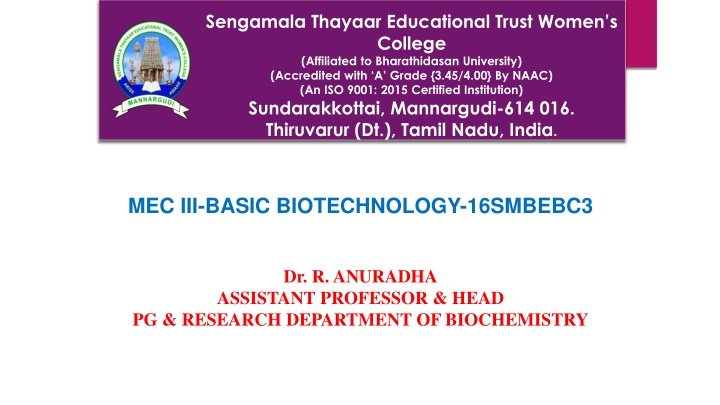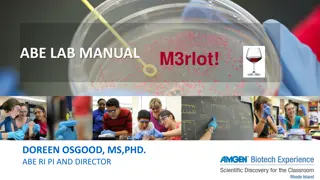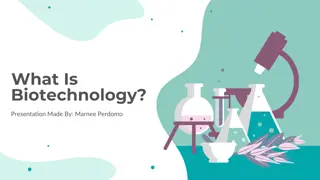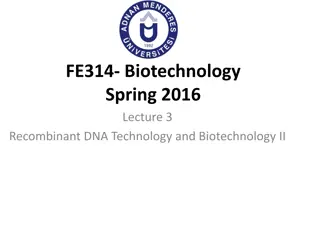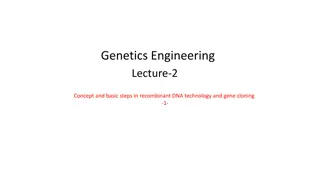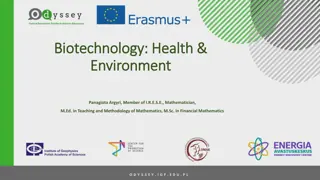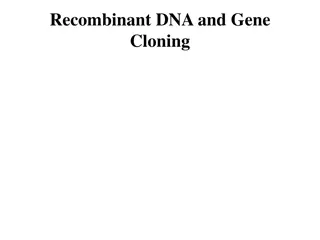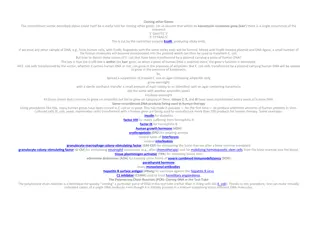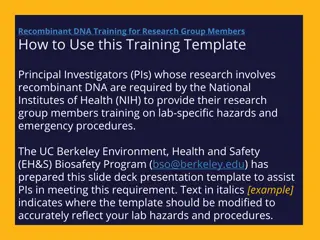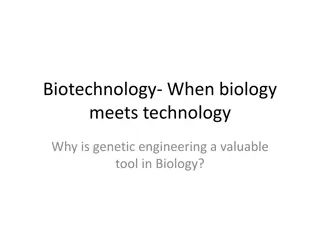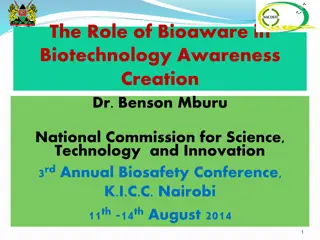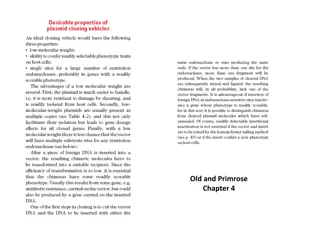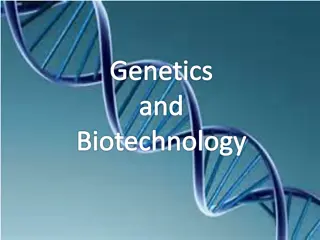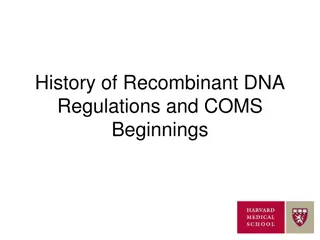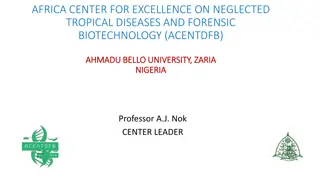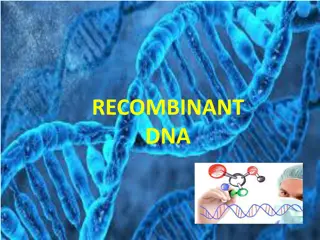Introduction to Recombinant Technology in Biotechnology
Recombinant technology involves transferring rDNA into host cells for genetic modifications. Methods like particle bombardment and microinjection are used to introduce rDNA into plant, animal, and fungal cells. Tools like gene guns are utilized for this purpose, aiding in the transformation of host cells into recombinant cells. Learn more about this fascinating field at Sengamala Thayaar Educational Trust Women's College.
Download Presentation

Please find below an Image/Link to download the presentation.
The content on the website is provided AS IS for your information and personal use only. It may not be sold, licensed, or shared on other websites without obtaining consent from the author.If you encounter any issues during the download, it is possible that the publisher has removed the file from their server.
You are allowed to download the files provided on this website for personal or commercial use, subject to the condition that they are used lawfully. All files are the property of their respective owners.
The content on the website is provided AS IS for your information and personal use only. It may not be sold, licensed, or shared on other websites without obtaining consent from the author.
E N D
Presentation Transcript
Sengamala Thayaar Educational Trust Womens College (Affiliated to Bharathidasan University) (Accredited with A Grade {3.45/4.00} By NAAC) (An ISO 9001: 2015 Certified Institution) Sundarakkottai, Mannargudi-614 016. Thiruvarur (Dt.), Tamil Nadu, India. MEC III-BASIC BIOTECHNOLOGY-16SMBEBC3 Dr. R. ANURADHA ASSISTANT PROFESSOR & HEAD PG & RESEARCH DEPARTMENT OF BIOCHEMISTRY
PARTICLE BOMBARDMENT AND MICROINJECTION
RECOMBINANT TECHNOLOGY- INTRODUCTION The transfer of rDNA into a bacterial cell or plant cell is called introduction of rDNA into host cells. The cell receiving the rDNA is called Host cell. The host cell containing rDNA is known as Transformed or Recombinant cell.
TRANSFER INTO ANIMAL CELLS Transfection, Liposome mediated gene transfer, Particle bombardment method, Virus vector method, Microinjection, Electroporation.
PARTICLE BOMBARDMENT Shooting the plant or animal cells by DNA coated gold or tungsten particles for introducing DNAs into the cells, is called PARTICLE BOMBARDMENT or BIOLISTICS. In this method rDNA can be introduced into plant cells, fungal cells, animal cells and cell Organelles such as chloroplast and mitochondria.
MICROPROJECTILE Vectors are used to introduce the rDNA into the cells. The instrument used to shoot the DNA into cells are GENE GUN or MICROPROJECTILE GUN. The gene gun is doing the work of a vector.
Microprojectile gun consist of, 1. Blank charge 2. Firing pin 3. Nylon macroprojectile 4. Microprojectiles 5. Stopping screen 6. Target cells. All these components are enclosed in vaccum chamber.
The rDNA is mixed with tungsten or gold particles of microscopic size and it is treated with CaCl2 or spermidine or PEG. CaCl2 precipitates the rDNA onto the metal particles. The rDNA coated with tungsten or gold particles are said to be Microprojectiles.
The Microprojectiles are positioned on a holder about 5 cm above the cells, within the chamber of the gun. The chamber is sealed and Helium gas is pumped into a small compartment situated above the gold particles.
Once a predetermined pressure is reached, the gas is released and the gold particles are shot in the cells The gold particles act as Bullets, penetrating the cell wall and delivering the rDNA into the cells, interior.
The Microprojectiles are fired into plant cells or animal cells with the speed of 300-600 m/s using gene gun. Gun powder, pressurized helium gas or electric power is used to provide propelling force for the gun to drive the Microprojectiles into the cells. The rDNA gets integrated with the cell and hence recombinant cells are formed.
USES: Biolistics is an effective method for rDNAs into Mammalian cells. Useful method to transfer Immature embryos, Embryonic calling, Epidermal cells and Dicot plants.
MICROINJECTION Microinjection refers to the injection of cell Organelles directly into cells using a injection needle. By this method, as DNAs, proteins or cell Organelles are injected into animal cells, eggs, zygotes and protoplasts.
For microinjection the following instruments are required. A Sterioscopic Dissecting microscope, A micropipette, A glass injection needle.
The fertilized egg is transferred onto a microscopic slide under the microscope. The cell is held in position using a sucking pippete.
One end of the sucking pippete is positioned on the surface of the cell and a gentle suction pressure is applied on its other end. The rDNA is sucked into the Glass injection needle.
It is gently inserted into the zygote by viewing through the microscope. The rDNA is delivered into the zygote and the needle is drawn back carefully.
The rDNA gets integrated into the genome of the zygote. The microinjected embryos are cultured in vitro upto the morula or blastocyst stage and then implanted into a female to produce Transgenic organism.
The surviving embryos are transferred into the uterus of a suurrogate mother These embryos developed into Transgenic mice.
LIMITATIONS rDNAs can be microinjected only into a few cells at a time. Microinjection needs technical experienced workers. It needs a micromanipulator.
THANK YOU. THANK YOU.
